Development of Plant-Based Vaccines for Prevention of Avian Influenza and Newcastle Disease in Poultry
Abstract
1. Introduction
2. Avian Influenza Virus (AIV)
3. Newcastle Disease Virus
4. Overview of Vaccines for AI and ND Immunisation
| Vaccine | Advantages | Disadvantages |
|---|---|---|
Inactivated vaccine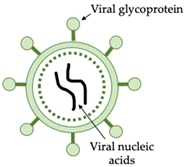 |
|
|
Live-attenuated vaccine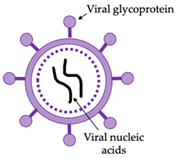 |
|
|
Subunit vaccine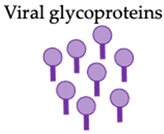 |
|
|
Vector-based vaccine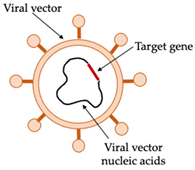 |
|
|
DNA vaccine |
|
|
Virus-like particles (VLPs) |
|
|
5. Pipeline for Production of Plant-Based Vaccines

5.1. Plant-Based Vaccines against Avian Influenza
| Antigen | Expression Host | Immunity | Notes | References |
|---|---|---|---|---|
| HA (H7) | N. benthamiana | Not mentioned | Transient expression | [70] |
| HA1 | Alfalfa, soybean, and lettuce | Not mentioned | Expression targeted to ER, apoplastic space and protein bodies | [71] |
| Full-length and truncated HA (H5) | N. benthamiana, N. tabacum | Specific immune response in mice and chicken | Targeting of different cell compartments | [72] |
| HA (H5) | N. tabacum | HAI antibody raised in chickens | Targeted expression in seeds | [73] |
| Oligomeric HA (H5) | N. benthamiana | Neutralising antibody in chicken and mice | Oligomerisation achieved by several approaches | [75,76,77] |
| HA+M2 VLPs (H6) | N. benthamiana1 | Neutralising antibody in chicken | Co-expression of M2 and HA increased yield of VLPs | [78] |
| HA | Arabidopsis thaliana | HA-specific antibodies and mucosal antibodies in mice | Oral administration | [79] |
| Truncated HA (H5) | N. benthamiana | Specific antibodies in mice and ferrets | Intranasal administration | [80] |
| M2e peptide (H5) | N. tabacum | Not mentioned | Stable transfection | [81] |
| M2e fused to ricin toxin B chain (H5) | Duckweed | Specific antibodies against M2e peptide in mice | Oral administration to mice | [82] |
| HA (H5) | Duckweed | Neutralising antibodies and protective immunity in birds | Oil-in-water emulsion protected chickens | [83] |
5.2. Plant-Based Vaccines against Newcastle Disease Virus
| Antigen | Host | Notes | References |
|---|---|---|---|
| HN (LaSota) | N. benthamiana1 | Compared SP of HN with sea anemone equistatin | [88] |
| HN (LaSota) | N. tabacum | N/A | [89] |
| F (LaSota) | Zea mays | Neutralising antibodies elicited in chickens | [90,91] |
| F and HN (LaSota) | Solanum tuberosum cv. Kennebec | Humoral and cell-mediated immune responses in mice | [88,92] |
| F and HN (LaSota) | N. tabacum | ELISA 2 detection of anti-NDV antibodies in Rabbit | [93,94] |
| F and HN (chicken/SPVC/Karachi) | Zea mays | Specific locally secreted IgY in chickens | [95] |
| F (XJ-2/97) | Oryza sativa | Challenge of chickens | [96] |
6. Advantages of Plant-Based Vaccines
7. Challenges for Oral Delivery of Plant-Based Vaccines?
8. Conclusions and Future Prospects
Author Contributions
Funding
Conflicts of Interest
References
- ICTV. International Committee on Taxonomy of Viruses. Available online: https://ictv.global/taxonomy/ (accessed on 26 May 2021).
- Palese, P. Orthomyxoviridae: The viruses and their replication. In Fields Virology, 5th ed.; Fields, B.N., Knipe, D.M., Howley, P.M., Eds.; Wolters Kluwer Health/Lippincott Williams & Wilkins: Philadelphia, PA, USA, 2007; pp. 1647–1689. [Google Scholar]
- Harder, T.C.; Buda, S.; Hengel, H.; Beer, M.; Mettenleiter, T.C. Poultry food products—A source of avian influenza virus transmission to humans? Clin. Microbiol. Infect. 2016, 22, 141–146. [Google Scholar] [CrossRef] [PubMed]
- Pusch, E.A.; Suarez, D.L. The Multifaceted Zoonotic Risk of H9N2 Avian Influenza. Vet. Sci. 2018, 5, 82. [Google Scholar] [CrossRef] [PubMed]
- Swayne, D.E.; Sims, L. Avian influenza. In Veterinary Vaccines: Principles and Applications; Metwally, S., El Idrissi, M., Viljoen, G., Eds.; Wiley-Blackwell: Chichester, UK, 2021. [Google Scholar]
- Aldous, E.W.; Alexander, D.J. Detection and differentiation of Newcastle disease virus (avian paramyxovirus type 1). Avian Pathol. 2001, 30, 117–128. [Google Scholar] [CrossRef] [PubMed]
- Alexander, D.J. Newcastle disease and other avian paramyxoviruses. Rev. Sci. Technol. 2000, 19, 443–462. [Google Scholar] [CrossRef] [PubMed]
- Maclachlan, N.J.; Dubovi, E.J. Fenner’s Veterinary Virology, 5th ed.; Academic Press: Cambridge, MA, USA, 2010. [Google Scholar]
- Bello, M.B.; Yusoff, K.; Ideris, A.; Hair-Bejo, M.; Peeters, B.P.H.; Omar, A.R. Diagnostic and Vaccination Approaches for Newcastle Disease Virus in Poultry: The Current and Emerging Perspectives. Biomed Res. Int. 2018, 2018, 7278459. [Google Scholar] [CrossRef] [PubMed]
- Kolakofsky, D.; Pelet, T.; Garcin, D.; Hausmann, S.; Curran, J.; Roux, L. Paramyxovirus RNA synthesis and the requirement for hexamer genome length: The rule of six revisited. J. Virol. 1998, 72, 891–899. [Google Scholar] [CrossRef] [PubMed]
- Dortmans, J.C.; Rottier, P.J.; Koch, G.; Peeters, B.P. The viral replication complex is associated with the virulence of Newcastle disease virus. J. Virol. 2010, 84, 10113–10120. [Google Scholar] [CrossRef] [PubMed]
- Steward, M.; Vipond, I.B.; Millar, N.S.; Emmerson, P.T. RNA editing in Newcastle disease virus. J. Gen. Virol. 1993, 74, 2539–2547. [Google Scholar] [CrossRef] [PubMed]
- Huang, Z.; Krishnamurthy, S.; Panda, A.; Samal, S.K. Newcastle disease virus V protein is associated with viral pathogenesis and functions as an alpha interferon antagonist. J. Virol. 2003, 77, 8676–8685. [Google Scholar] [CrossRef]
- Karsunke, J.; Heiden, S.; Murr, M.; Karger, A.; Franzke, K.; Mettenleiter, T.C.; Romer-Oberdorfer, A. W protein expression by Newcastle disease virus. Virus Res. 2019, 263, 207–216. [Google Scholar] [CrossRef]
- Qiu, X.; Fu, Q.; Meng, C.; Yu, S.; Zhan, Y.; Dong, L.; Song, C.; Sun, Y.; Tan, L.; Hu, S.; et al. Newcastle Disease Virus V Protein Targets Phosphorylated STAT1 to Block IFN-I Signaling. PLoS ONE 2016, 11, e0148560. [Google Scholar] [CrossRef]
- Alexander, D.J. Newcastle Disease; Springer: Boston, MA, USA, 1988. [Google Scholar]
- Swayne, D.E. Impact of vaccines and vaccination on global control of avian influenza. Avian Dis. 2012, 56, 818–828. [Google Scholar] [CrossRef]
- Cosset, F.L.; Bouquet, J.F.; Drynda, A.; Chebloune, Y.; Rey-Senelonge, A.; Kohen, G.; Nigon, V.M.; Desmettre, P.; Verdier, G. Newcastle disease virus (NDV) vaccine based on immunization with avian cells expressing the NDV hemagglutinin-neuraminidase glycoprotein. Virology 1991, 185, 862–866. [Google Scholar] [CrossRef]
- Dimitrov, K.M.; Lee, D.H.; Williams-Coplin, D.; Olivier, T.L.; Miller, P.J.; Afonso, C.L. Newcastle Disease Viruses Causing Recent Outbreaks Worldwide Show Unexpectedly High Genetic Similarity to Historical Virulent Isolates from the 1940s. J. Clin. Microbiol. 2016, 54, 1228–1235. [Google Scholar] [CrossRef] [PubMed]
- Swayne, D.E. Avian influenza vaccines and therapies for poultry. Comp. Immunol. Microbiol. Infect. Dis. 2009, 32, 351–363. [Google Scholar] [CrossRef] [PubMed]
- Lee, Y.J.; Sung, H.W.; Choi, J.G.; Lee, E.K.; Yoon, H.; Kim, J.H.; Song, C.S. Protection of chickens from Newcastle disease with a recombinant baculovirus subunit vaccine expressing the fusion and hemagglutinin-neuraminidase proteins. J. Vet. Sci. 2008, 9, 301–308. [Google Scholar] [CrossRef][Green Version]
- Dimitrov, K.M.; Afonso, C.L.; Yu, Q.; Miller, P.J. Newcastle disease vaccines—A solved problem or a continuous challenge? Vet. Microbiol. 2017, 206, 126–136. [Google Scholar] [CrossRef]
- Bertran, K.; Lee, D.H.; Criado, M.F.; Balzli, C.L.; Killmaster, L.F.; Kapczynski, D.R.; Swayne, D.E. Maternal antibody inhibition of recombinant Newcastle disease virus vectored vaccine in a primary or booster avian influenza vaccination program of broiler chickens. Vaccine 2018, 36, 6361–6372. [Google Scholar] [CrossRef]
- de Vries, R.D.; Herfst, S.; Richard, M. Avian Influenza A Virus Pandemic Preparedness and Vaccine Development. Vaccines 2018, 6, 46. [Google Scholar] [CrossRef] [PubMed]
- Gamvrellis, A.; Leong, D.; Hanley, J.C.; Xiang, S.D.; Mottram, P.; Plebanski, M. Vaccines that facilitate antigen entry into dendritic cells. Immunol. Cell Biol. 2004, 82, 506–516. [Google Scholar] [CrossRef]
- Grgacic, E.V.; Anderson, D.A. Virus-like particles: Passport to immune recognition. Methods 2006, 40, 60–65. [Google Scholar] [CrossRef] [PubMed]
- Zepeda-Cervantes, J.; Ramírez-Jarquín, J.O.; Vaca, L. Interaction Between Virus-Like Particles (VLPs) and Pattern Recognition Receptors (PRRs) From Dendritic Cells (DCs): Toward Better Engineering of VLPs. Front. Immunol. 2020, 11, 1100. [Google Scholar] [CrossRef] [PubMed]
- McGinnes, L.W.; Morrison, T.G. Newcastle disease virus-like particles: Preparation, purification, quantification, and incorporation of foreign glycoproteins. Curr. Protoc. Microbiol. 2013, 30, 18.12.11–18.12.21. [Google Scholar] [CrossRef] [PubMed]
- McGinnes, L.W.; Pantua, H.; Laliberte, J.P.; Gravel, K.A.; Jain, S.; Morrison, T.G. Assembly and biological and immunological properties of Newcastle disease virus-like particles. J. Virol. 2010, 84, 4513–4523. [Google Scholar] [CrossRef] [PubMed]
- Nooraei, S.B.H.; Hoseini, Z.S.; Katalani, C.; Hajizade, A.; Easton, A.J.; Ahmadian, G. Virus-like particles: Preparation, immunogenicity and their roles as nanovaccines and drug nanocarriers. J. Nanobiotechnol. 2021, 19, 59. [Google Scholar] [CrossRef] [PubMed]
- Moradi Vahdat, M.; Hemmati, F.; Ghorbani, A.; Rutkowska, D.; Afsharifar, A.; Eskandari, M.H.; Rezaei, N.; Niazi, A. Hepatitis B core-based virus-like particles: A platform for vaccine development in plants. Biotechnol. Rep. 2021, 29, e00605. [Google Scholar] [CrossRef] [PubMed]
- Spice, A.J.; Aw, R.; Bracewell, D.G.; Polizzi, K.M. Synthesis and Assembly of Hepatitis B Virus-Like Particles in a Pichia pastoris Cell-Free System. Front. Bioeng. Biotechnol. 2020, 8, 72. [Google Scholar] [CrossRef] [PubMed]
- Pillet, S.; Aubin, É.; Trépanier, S.; Bussière, D.; Dargis, M.; Poulin, J.-F.; Yassine-Diab, B.; Ward, B.J.; Landry, N. A plant-derived quadrivalent virus like particle influenza vaccine induces cross-reactive antibody and T cell response in healthy adults. Clin. Immunol. 2016, 168, 72–87. [Google Scholar] [CrossRef]
- Agarwal, P.; Gautam, T.; Singh, A.K.; Burma, P.K. Evaluating the effect of codon optimization on expression of bar gene in transgenic tobacco plants. J. Plant Biochem. Biotechnol. 2019, 28, 189–202. [Google Scholar] [CrossRef]
- Kozak, M. The scanning model for translation: An update. J. Cell Biol. 1989, 108, 229–241. [Google Scholar] [CrossRef]
- Meriç, S.; Gümüş, T.; Ayan, A. Plant-based Vaccines: The Future of Preventive Healthcare? In Botany—Recent Advances and Applications; Ghimire, B.K., Ed.; IntechOpen: Rijeka, Croatia, 2021. [Google Scholar] [CrossRef]
- Johansen, L.K.; Carrington, J.C. Silencing on the spot. Induction and suppression of RNA silencing in the Agrobacterium-mediated transient expression system Plant Physiol. 2001, 126, 930–938. [Google Scholar] [CrossRef] [PubMed]
- Koizumi, M.; Shimotori, Y.; Saeki, Y.; Hirai, S.; Oka, S. Effects of the 2b Protein of Cucumber mosaic virus Subgroup IB Strain IA on Different Transgene-Induced RNA Silencing Pathways. Plant Mol. Biol. Rep. 2017, 35, 265–272. [Google Scholar] [CrossRef]
- Norkunas, K.; Harding, R.; Dale, J.; Dugdale, B. Improving agroinfiltration-based transient gene expression in Nicotiana benthamiana. Plant Methods 2018, 14, 71. [Google Scholar] [CrossRef] [PubMed]
- Lindbo, J.A. High-efficiency protein expression in plants from agroinfection-compatible Tobacco mosaic virus expression vectors. BMC Biotechnol. 2007, 7, 52. [Google Scholar] [CrossRef] [PubMed]
- Sainsbury, F.; Lomonossoff, G.P. Extremely High-Level and Rapid Transient Protein Production in Plants without the Use of Viral Replication. Plant Physiol. 2008, 148, 1212–1218. [Google Scholar] [CrossRef] [PubMed]
- Leuzinger, K.; Dent, M.; Hurtado, J.; Stahnke, J.; Lai, H.; Zhou, X.; Chen, Q. Efficient agroinfiltration of plants for high-level transient expression of recombinant proteins. JoVE 2013, 77, e50521. [Google Scholar] [CrossRef] [PubMed]
- Peyret, H.; Brown, J.K.M.; Lomonossoff, G.P. Improving plant transient expression through the rational design of synthetic 5′ and 3′ untranslated regions. Plant Methods 2019, 15, 108. [Google Scholar] [CrossRef]
- Takeyama, N.; Kiyono, H.; Yuki, Y. Plant-based vaccines for animals and humans: Recent advances in technology and clinical trials. Ther. Adv. Vaccines 2015, 3, 139–154. [Google Scholar] [CrossRef] [PubMed]
- Hellens, R.; Mullineaux, P.; Klee, H. Technical focus: A guide to agrobacterium binary Ti vectors. Trends Plant Sci. 2000, 5, 446–451. [Google Scholar] [CrossRef]
- Wroblewski, T.; Tomczak, A.; Michelmore, R. Optimization of Agrobacterium-mediated transient assays of gene expression in lettuce, tomato and Arabidopsis. Plant Biotechnol. J. 2005, 3, 259–273. [Google Scholar] [CrossRef] [PubMed]
- Pratiwi, R.A.; Surya, M.I. Agrobacterium-Mediated Transformation. In Genetic Transformation in Crops; To, K.Y., Ed.; IntechOpen: Rijeka, Croatia, 2020. [Google Scholar] [CrossRef]
- Hefferon, K. Plant virus expression vectors: A powerhouse for global health. Biomedicines 2017, 5, 44. [Google Scholar] [CrossRef] [PubMed]
- Gleba, Y.; Klimyuk, V.; Marillonnet, S. Magnifection—A new platform for expressing recombinant vaccines in plants. Vaccine 2005, 23, 2042–2048. [Google Scholar] [CrossRef] [PubMed]
- Peyret, H.; Lomonossoff, G.P. When plant virology met Agrobacterium: The rise of the deconstructed clones. Plant Biotechnol. J. 2015, 13, 1121–1135. [Google Scholar] [CrossRef] [PubMed]
- Mardanova, E.S.; Kotlyarov, R.Y.; Ravin, N.V. The optimization of viral vector translation improves the production of recombinant proteins in plants. Mol. Biol. 2009, 43, 524–527. [Google Scholar] [CrossRef]
- Sainsbury, F.; Thuenemann, E.C.; Lomonossoff, G.P. pEAQ: Versatile expression vectors for easy and quick transient expression of heterologous proteins in plants. Plant Biotechnol. J. 2009, 7, 682–693. [Google Scholar] [CrossRef] [PubMed]
- Marillonnet, S.; Giritch, A.; Gils, M.; Kandzia, R.; Klimyuk, V.; Gleba, Y. In planta engineering of viral RNA replicons: Efficient assembly by recombination of DNA modules delivered by Agrobacterium. Proc. Natl. Acad. Sci. USA 2004, 101, 6852–6857. [Google Scholar] [CrossRef] [PubMed]
- Peyret, H.; Lomonossoff, G.P. The pEAQ vector series: The easy and quick way to produce recombinant proteins in plants. Plant Mol. Biol. 2013, 83, 51–58. [Google Scholar] [CrossRef] [PubMed]
- Lindbo, J.A. TRBO: A High-Efficiency Tobacco Mosaic Virus RNA-Based Overexpression Vector. Plant Physiol. 2007, 145, 1232–1240. [Google Scholar] [CrossRef] [PubMed]
- Kagale, S.; Uzuhashi, S.; Wigness, M.; Bender, T.; Yang, W.; Borhan, M.H.; Rozwadowski, K. TMV-Gate vectors: Gateway compatible tobacco mosaic virus based expression vectors for functional analysis of proteins. Sci. Rep. 2012, 2, 874. [Google Scholar] [CrossRef] [PubMed]
- Chapman, S.; Kavanagh, T.; Baulcombe, D. Potato virus X as a vector for gene expression in plants. Plant J. 1992, 2, 549–557. [Google Scholar] [CrossRef]
- Chen, Q.; He, J.; Phoolcharoen, W.; Mason, H.S. Geminiviral vectors based on bean yellow dwarf virus for production of vaccine antigens and monoclonal antibodies in plants. Hum. Vaccines 2011, 7, 331–338. [Google Scholar] [CrossRef] [PubMed]
- Sharma, A.K.; Sharma, M.K. Plants as bioreactors: Recent developments and emerging opportunities. Biotechnol. Adv. 2009, 27, 811–832. [Google Scholar] [CrossRef] [PubMed]
- Yamamoto, T.; Hoshikawa, K.; Ezura, K.; Okazawa, R.; Fujita, S.; Takaoka, M.; Mason, H.S.; Ezura, H.; Miura, K. Improvement of the transient expression system for production of recombinant proteins in plants. Sci. Rep. 2018, 8, 4755. [Google Scholar] [CrossRef] [PubMed]
- Chen, Q.; Lai, H. Plant-derived virus-like particles as vaccines. Hum. Vaccines Immunother. 2013, 9, 26–49. [Google Scholar] [CrossRef] [PubMed]
- Aojewska, E.; Kowalczyk, T.; Olejniczak, S.; Sakowicz, T. Extraction and purification methods in downstream processing of plant-based recombinant proteins. Protein Expr. Purif. 2016, 120, 110–117. [Google Scholar] [CrossRef] [PubMed]
- Azzoni, A.R.; Kusnadi, A.R.; Miranda, E.A.; Nikolov, Z.L. Recombinant aprotinin produced in transgenic corn seed: Extraction and purification studies. Biotechnol. Bioeng. 2002, 80, 268–276. [Google Scholar] [CrossRef] [PubMed]
- Grosse-Holz, F.; Madeira, L.; Zahid, M.A.; Songer, M.; Kourelis, J.; Fesenko, M.; Ninck, S.; Kaschani, F.; Kaiser, M.; van der Hoorn, R.A.L. Three unrelated protease inhibitors enhance accumulation of pharmaceutical recombinant proteins in Nicotiana benthamiana. Plant Biotechnol. J. 2018, 16, 1797–1810. [Google Scholar] [CrossRef] [PubMed]
- Schillberg, S.; Twyman, R.M.; Fischer, R. Opportunities for recombinant antigen and antibody expression in transgenic plants—Technology assessment. Vaccine 2005, 23, 1764–1769. [Google Scholar] [CrossRef]
- Ruiz, V.; Baztarrica, J.; Rybicki, E.P.; Meyers, A.E.; Wigdorovitz, A. Minimally processed crude leaf extracts of Nicotiana benthamiana containing recombinant foot and mouth disease virus-like particles are immunogenic in mice. Biotechnol. Rep. 2018, 20, e00283. [Google Scholar] [CrossRef]
- Mokoena, N.B.; Moetlhoa, B.; Rutkowska, D.A.; Mamputha, S.; Dibakwane, V.S.; Tsekoa, T.L.; O’Kennedy, M.M. Plant-produced Bluetongue chimaeric VLP vaccine candidates elicit serotype-specific immunity in sheep. Vaccine 2019, 37, 6068–6075. [Google Scholar] [CrossRef]
- Farnos, O.; Gelaye, E.; Trabelsi, K.; Bernier, A.; Subramani, K.; Kallel, H.; Yami, M.; Kamen, A.A. Establishing a Robust Manufacturing Platform for Recombinant Veterinary Vaccines: An Adenovirus-Vector Vaccine to Control Newcastle Disease Virus Infections of Poultry in Sub-Saharan Africa. Vaccines 2020, 8, 338. [Google Scholar] [CrossRef]
- Poulet, H.; Minke, J.; Pardo, M.C.; Juillard, V.; Nordgren, B.; Audonnet, J.C. Development and registration of recombinant veterinary vaccines. The example of the canarypox vector platform. Vaccine 2007, 25, 5606–5612. [Google Scholar] [CrossRef] [PubMed]
- Kanagarajan, S.; Tolf, C.; Lundgren, A.; Waldenström, J.; Brodelius, P.E. Transient expression of hemagglutinin antigen from low pathogenic avian influenza A (H7N7) in Nicotiana benthamiana. PLoS ONE 2012, 7, e33010. [Google Scholar] [CrossRef] [PubMed]
- Farsad, A.s.; Malek Zadeh, S.; Moshtaqi, N.; Fotouhi, F.; Zibaei, S. Transient expression of HA1 antigen of avian influenza virus (H5N1) in alfalfa, soybean and lettuce leaves by agroinfiltration. Agric. Biotechnol. J. 2016, 8, 61–80. [Google Scholar] [CrossRef]
- Mortimer, E.; Maclean, J.M.; Mbewana, S.; Buys, A.; Williamson, A.-L.; Hitzeroth, I.I.; Rybicki, E.P. Setting up a platform for plant-based influenza virus vaccine production in South Africa. BMC Biotechnol. 2012, 12, 14. [Google Scholar] [CrossRef]
- Ceballo, Y.; Tiel, K.; López, A.; Cabrera, G.; Pérez, M.; Ramos, O.; Rosabal, Y.; Montero, C.; Menassa, R.; Depicker, A.; et al. High accumulation in tobacco seeds of hemagglutinin antigen from avian (H5N1) influenza. Transgenic Res. 2017, 26, 775–789. [Google Scholar] [CrossRef]
- Zakeri, B.; Fierer, J.O.; Celik, E.; Chittock, E.C.; Schwarz-Linek, U.; Moy, V.T.; Howarth, M. Peptide tag forming a rapid covalent bond to a protein, through engineering a bacterial adhesin. Proc. Natl. Acad. Sci. USA 2012, 109, E690–E697. [Google Scholar] [CrossRef]
- Phan, H.T.; Pham, V.T.; Ho, T.T.; Pham, N.B.; Chu, H.H.; Vu, T.H.; Abdelwhab, E.M.; Scheibner, D.; Mettenleiter, T.C.; Hanh, T.X.; et al. Immunization with Plant-Derived Multimeric H5 Hemagglutinins Protect Chicken against Highly Pathogenic Avian Influenza Virus H5N1. Vaccines 2020, 8, 593. [Google Scholar] [CrossRef] [PubMed]
- Thi Pham, V.; Thi Ho, T.; Trong Phan, H.; Le, T.H.; Bich Pham, N.; Conrad, U.; Huyen Vu, T.; Hoang Chu, H. A Plant-Based Artificial Haemagglutinin (A/H5N1) Strongly Induced Neutralizing Immune Responses in Mice. Appl. Sci. 2019, 9, 4605. [Google Scholar] [CrossRef]
- Phan, H.T.; Gresch, U.; Conrad, U. In vitro-Formulated Oligomers of Strep-Tagged Avian Influenza Haemagglutinin Produced in Plants Cause Neutralizing Immune Responses. Front. Bioeng. Biotechnol. 2018, 6, 115. [Google Scholar] [CrossRef]
- Smith, T.; O’Kennedy, M.M.; Wandrag, D.B.R.; Adeyemi, M.; Abolnik, C. Efficacy of a plant-produced virus-like particle vaccine in chickens challenged with Influenza A H6N2 virus. Plant Biotechnol. J. 2020, 18, 502–512. [Google Scholar] [CrossRef]
- Lee, G.; Na, Y.J.; Yang, B.G.; Choi, J.P.; Seo, Y.B.; Hong, C.P.; Yun, C.H.; Kim, D.H.; Sohn, E.J.; Kim, J.H.; et al. Oral immunization of haemaggulutinin H5 expressed in plant endoplasmic reticulum with adjuvant saponin protects mice against highly pathogenic avian influenza A virus infection. Plant Biotechnol. J. 2015, 13, 62–72. [Google Scholar] [CrossRef] [PubMed]
- Major, D.; Chichester, J.A.; Pathirana, R.D.; Guilfoyle, K.; Shoji, Y.; Guzman, C.A.; Yusibov, V.; Cox, R.J. Intranasal vaccination with a plant-derived H5 HA vaccine protects mice and ferrets against highly pathogenic avian influenza virus challenge. Hum. Vaccines Immunother. 2015, 11, 1235–1243. [Google Scholar] [CrossRef]
- Tarasenko, I.V.; Taranov, A.I.; Firsov, A.P.; Dolgov, S.V. Expression of the nucleotide sequence for the M2e peptide of avian influenza virus in transgenic tobacco plants. Appl. Biochem. Microbiol. 2013, 49, 695–701. [Google Scholar] [CrossRef]
- Firsov, A.; Tarasenko, I.; Mitiouchkina, T.; Shaloiko, L.; Kozlov, O.; Vinokurov, L.; Rasskazova, E.; Murashev, A.; Vainstein, A.; Dolgov, S. Expression and Immunogenicity of M2e Peptide of Avian Influenza Virus H5N1 Fused to Ricin Toxin B Chain Produced in Duckweed Plants. Front. Chem. 2018, 6, 22. [Google Scholar] [CrossRef] [PubMed]
- Bertran, K.; Thomas, C.; Guo, X.; Bublot, M.; Pritchard, N.; Regan, J.T.; Cox, K.M.; Gasdaska, J.R.; Dickey, L.F.; Kapczynski, D.R.; et al. Expression of H5 hemagglutinin vaccine antigen in common duckweed (Lemna minor) protects against H5N1 high pathogenicity avian influenza virus challenge in immunized chickens. Vaccine 2015, 33, 3456–3462. [Google Scholar] [CrossRef]
- Haustein, A.T.; Gilman, R.H.; Skillicorn, P.W.; Hannan, H.; Díaz, F.; Guevara, V.; Vergara, V.; Gastañaduy, A.; Gilman, J.B. Performance of broiler chickens fed diets containing duckweed (Lemna gibba). J. Agric. Sci. 1994, 122, 285–289. [Google Scholar] [CrossRef]
- Eichelberger, M.C.; Wan, H. Influenza neuraminidase as a vaccine antigen. Curr. Top. Microbiol. Immunol. 2015, 386, 275–299. [Google Scholar] [CrossRef]
- Epstein, S.L.; Kong, W.P.; Misplon, J.A.; Lo, C.Y.; Tumpey, T.M.; Xu, L.; Nabel, G.J. Protection against multiple influenza A subtypes by vaccination with highly conserved nucleoprotein. Vaccine 2005, 23, 5404–5410. [Google Scholar] [CrossRef]
- Yusibov, V.; Streatfield, S.J.; Kushnir, N. Clinical development of plant-produced recombinant pharmaceuticals: Vaccines, antibodies and beyond. Hum. Vaccine 2011, 7, 313–321. [Google Scholar] [CrossRef]
- Gomez, E.; Zoth, S.C.; Asurmendi, S.; Vazquez Rovere, C.; Berinstein, A. Expression of hemagglutinin-neuraminidase glycoprotein of newcastle disease Virus in agroinfiltrated Nicotiana benthamiana plants. J. Biotechnol. 2009, 144, 337–340. [Google Scholar] [CrossRef] [PubMed]
- Hahn, B.-S.; Jeon, I.-S.; Jung, Y.-J.; Kim, J.-B.; Park, J.-S.; Ha, S.-H.; Kim, K.-H.; Kim, H.-M.; Yang, J.-S.; Kim, Y.-H. Expression of hemagglutinin-neuraminidase protein of Newcastle disease virus in transgenic tobacco. Plant Biotechnol. Rep. 2007, 1, 85–92. [Google Scholar] [CrossRef]
- Guerrero-Andrade, O.; Loza-Rubio, E.; Olivera-Flores, T.; Fehervari-Bone, T.; Gomez-Lim, M.A. Expression of the Newcastle disease virus fusion protein in transgenic maize and immunological studies. Transgenic Res. 2006, 15, 455–463. [Google Scholar] [CrossRef] [PubMed]
- Yang, Z.Q.; Liu, Q.Q.; Pan, Z.M.; Yu, H.X.; Jiao, X.A. Expression of the fusion glycoprotein of Newcastle disease virus in transgenic rice and its immunogenicity in mice. Vaccine 2007, 25, 591–598. [Google Scholar] [CrossRef] [PubMed]
- Berinstein, A.; Vazquez-Rovere, C.; Asurmendi, S.; Gomez, E.; Zanetti, F.; Zabal, O.; Tozzini, A.; Conte Grand, D.; Taboga, O.; Calamante, G.; et al. Mucosal and systemic immunization elicited by Newcastle disease virus (NDV) transgenic plants as antigens. Vaccine 2005, 23, 5583–5589. [Google Scholar] [CrossRef]
- Shahriari, A.G.; Bagheri, A.; Bassami, M.R.; Malekzadeh-Shafaroudi, S.; Afsharifar, A.; Niazi, A. Expression of Hemagglutinin–Neuraminidase and fusion epitopes of Newcastle Disease Virus in transgenic tobacco. Electron. J. Biotechnol. 2016, 22, 38–43. [Google Scholar] [CrossRef]
- Shahriari, A.G.; Bagheri, A.; Afsharifar, A.; Habibi-Pirkoohi, M. Induction of Immune Response in Animal Model Using Recombinant Anti-NDV Vaccine. Iran. J. Biotechnol. 2019, 17, e2215. [Google Scholar] [CrossRef]
- Shahid, N.; Samiullah, T.R.; Shakoor, S.; Latif, A.; Yasmeen, A.; Azam, S.; Shahid, A.A.; Husnain, T.; Rao, A.Q. Early Stage Development of a Newcastle Disease Vaccine Candidate in Corn. Front Vet. Sci. 2020, 7, 499. [Google Scholar] [CrossRef] [PubMed]
- Ma, F.; Zhang, E.; Li, Q.; Xu, Q.; Ou, J.; Yin, H.; Li, K.; Wang, L.; Zhao, X.; Niu, X.; et al. A Plant-Produced Recombinant Fusion Protein-Based Newcastle Disease Subunit Vaccine and Rapid Differential Diagnosis Platform. Vaccines 2020, 8, 122. [Google Scholar] [CrossRef] [PubMed]
- Friedman, A. Oral Tolerance in Birds and Mammals: Digestive Tract Development Determines the Strategy. J. Appl. Poult. Res. 2008, 17, 168–173. [Google Scholar] [CrossRef]
- Gomez, E.; Chimeno Zoth, S.; Carrillo, E.; Estela Roux, M.; Berinstein, A. Mucosal immunity induced by orally administered transgenic plants. Immunobiology 2008, 213, 671–675. [Google Scholar] [CrossRef] [PubMed]
- Margolin, E.; Chapman, R.; Williamson, A.L.; Rybicki, E.P.; Meyers, A.E. Production of complex viral glycoproteins in plants as vaccine immunogens. Plant Biotechnol. J. 2018, 16, 1531–1545. [Google Scholar] [CrossRef] [PubMed]
- Nakajima, Y.; Suzuki, S. Environmental stresses induce misfolded protein aggregation in plant cells in a microtubule-dependent manner. Int. J. Mol. Sci. 2013, 14, 7771–7783. [Google Scholar] [CrossRef] [PubMed]
- Zhang, L.; Wang, A. Virus-induced ER stress and the unfolded protein response. Front. Plant Sci. 2012, 3, 293. [Google Scholar] [CrossRef]
- Margolin, E.; Allen, J.D.; Verbeek, M.; van Diepen, M.; Ximba, P.; Chapman, R.; Meyers, A.; Williamson, A.L.; Crispin, M.; Rybicki, E. Site-Specific Glycosylation of Recombinant Viral Glycoproteins Produced in Nicotiana benthamiana. Front. Plant Sci. 2021, 12, 709344. [Google Scholar] [CrossRef] [PubMed]
- Margolin, E.; Crispin, M.; Meyers, A.; Chapman, R.; Rybicki, E.P. A roadmap for the molecular farming of viral glycoprotein vaccines: Engineering glycosylation and glycosylation-directed folding. Front. Plant Sci. 2020, 11, 609207. [Google Scholar] [CrossRef] [PubMed]
- Wilbers, R.H.; Westerhof, L.B.; van Noort, K.; Obieglo, K.; Driessen, N.N.; Everts, B.; Gringhuis, S.I.; Schramm, G.; Goverse, A.; Smant, G.; et al. Production and glyco-engineering of immunomodulatory helminth glycoproteins in plants. Sci. Rep. 2017, 7, 45910. [Google Scholar] [CrossRef]
- Dejgaard, S.; Nicolay, J.; Taheri, M.; Thomas, D.Y.; Bergeron, J.J. The ER glycoprotein quality control system. Curr. Issues Mol. Biol. 2004, 6, 29–42. [Google Scholar] [PubMed]
- Michalak, M.; Corbett, E.F.; Mesaeli, N.; Nakamura, K.; Opas, M. Calreticulin: One protein, one gene, many functions. Biochem. J. 1999, 344, 281–292. [Google Scholar] [CrossRef]
- Shin, Y.J.; Konig-Beihammer, J.; Vavra, U.; Schwestka, J.; Kienzl, N.F.; Klausberger, M.; Laurent, E.; Grunwald-Gruber, C.; Vierlinger, K.; Hofner, M.; et al. N-Glycosylation of the SARS-CoV-2 Receptor Binding Domain Is Important for Functional Expression in Plants. Front. Plant Sci. 2021, 12, 689104. [Google Scholar] [CrossRef]
- Govea-Alonso, D.; Cardineau, G.; Rosales-Mendoza, S. Principles of Plant-Based Vaccines. In Genetically Engineered Plants as a Source of Vaccines against Wide Spread Diseases; Rosales-Mendoza, S., Ed.; Springer: New York, NY, USA, 2014. [Google Scholar]
- Streatfield, S.J. Regulatory issues for plant-made pharmaceuticals and vaccines. Expert Rev. Vaccines 2005, 4, 591–601. [Google Scholar] [CrossRef] [PubMed]
- Parvathy, S. Engineering plants as platforms for production of vaccines. Am. J. Plant Sci. 2020, 11, 707–735. [Google Scholar] [CrossRef]
- Lakshmi, P.S.; Verma, D.; Yang, X.; Lloyd, B.; Daniell, H. Low cost tuberculosis vaccine antigens in capsules: Expression in chloroplasts, bio-encapsulation, stability and functional evaluation in vitro. PLoS ONE 2013, 8, e54708. [Google Scholar] [CrossRef]
- Singh, A.; Kaur, G.; Singh, S.; Singh, N.; Saxena, G.; Verma, P.C. Recombinant plant engineering for immunotherapeutic production. Curr. Mol. Biol. Rep. 2017, 3, 306–316. [Google Scholar] [CrossRef] [PubMed]
- Rogalska, T.; Day, J.C.; AbouHaidar, M.; Hefferon, K. Current status of plants as vaccine production platforms. J. Clin. Cell Immunol. 2011, S4, 003. [Google Scholar] [CrossRef]
- Gomord, V.; Fitchette, A.-C.; Menu-Bouaouiche, L.; Saint-Jore-Dupas, C.; Plasson, C.; Michaud, D.; Faye, L. Plant-specific glycosylation patterns in the context of therapeutic protein production. Plant Biotechnol. J. 2010, 8, 564–587. [Google Scholar] [CrossRef] [PubMed]
- Sharma, M.; Sood, B. A banana or a syringe: Journey to edible vaccines. World J. Microbiol. Biotechnol. 2011, 27, 471–477. [Google Scholar] [CrossRef]
- Pabst, O.; Mowat, A.M. Oral tolerance to food protein. Mucosal Immunol. 2012, 5, 232–239. [Google Scholar] [CrossRef]
- Pascual, D.W. Vaccines are for dinner. Proc. Natl. Acad. Sci. USA 2007, 104, 10757–10758. [Google Scholar] [CrossRef] [PubMed]
- Kirk, D.D.; McIntosh, K.; Walmsley, A.M.; Peterson, R.K.D. Risk analysis for plant-made vaccines. Transgenic Res. 2005, 14, 449–462. [Google Scholar] [CrossRef] [PubMed]
- Peyret, H.; Steele, J.F.C.; Jung, J.W.; Thuenemann, E.C.; Meshcheriakova, Y.; Lomonossoff, G.P. Producing vaccines against enveloped viruses in plants: Making the impossible, difficult. Vaccines 2021, 9, 780. [Google Scholar] [CrossRef] [PubMed]
- Ward, B.J.; Makarkov, A.; Séguin, A.; Pillet, S.; Trépanier, S.; Dhaliwall, J.; Libman, M.D.; Vesikari, T.; Landry, N. Efficacy, immunogenicity, and safety of a plant-derived, quadrivalent, virus-like particle influenza vaccine in adults (18–64 years) and older adults (≥65 years): Two multicentre, randomised phase 3 trials. Lancet 2020, 396, 1491–1503. [Google Scholar] [CrossRef]
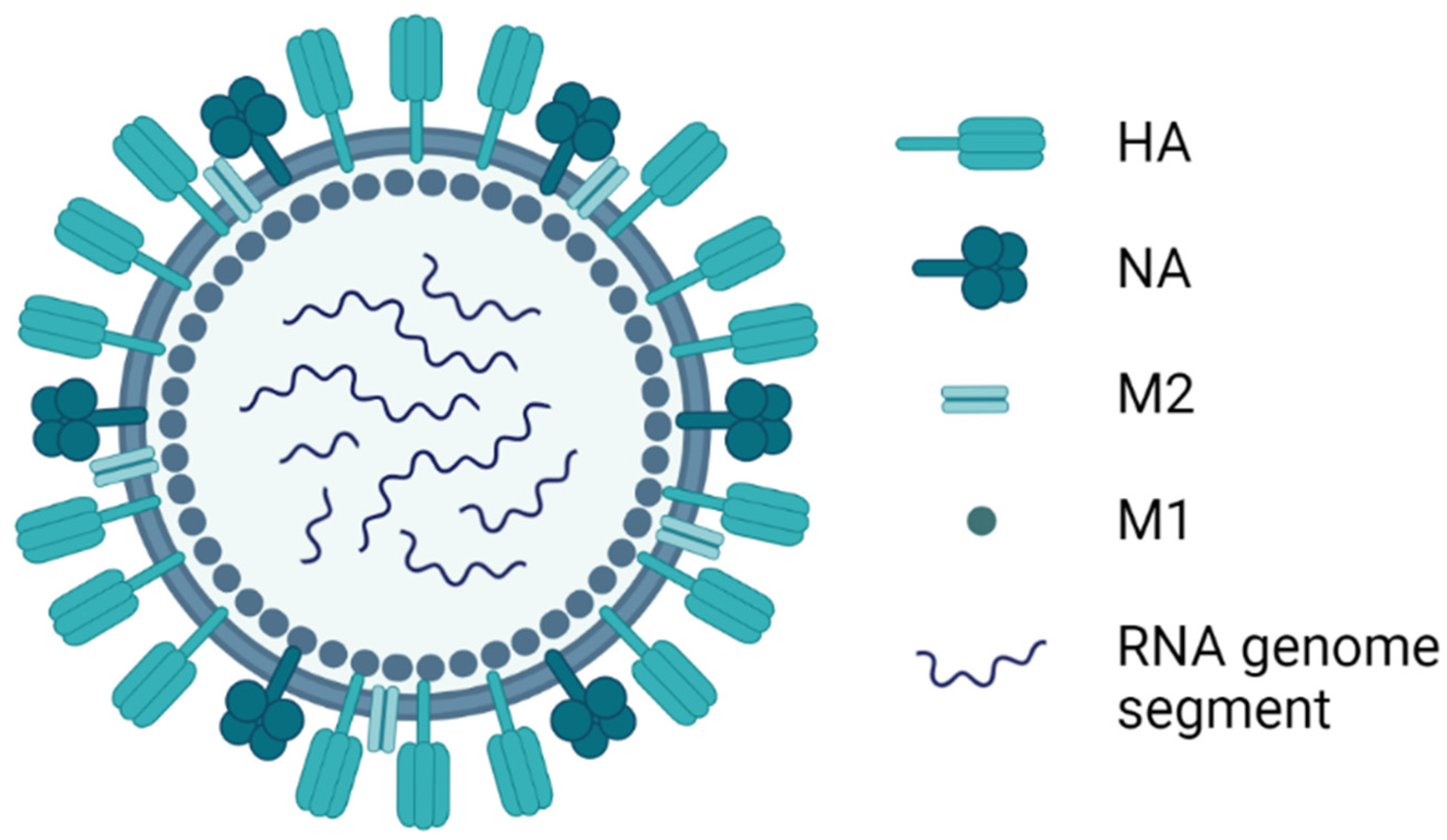
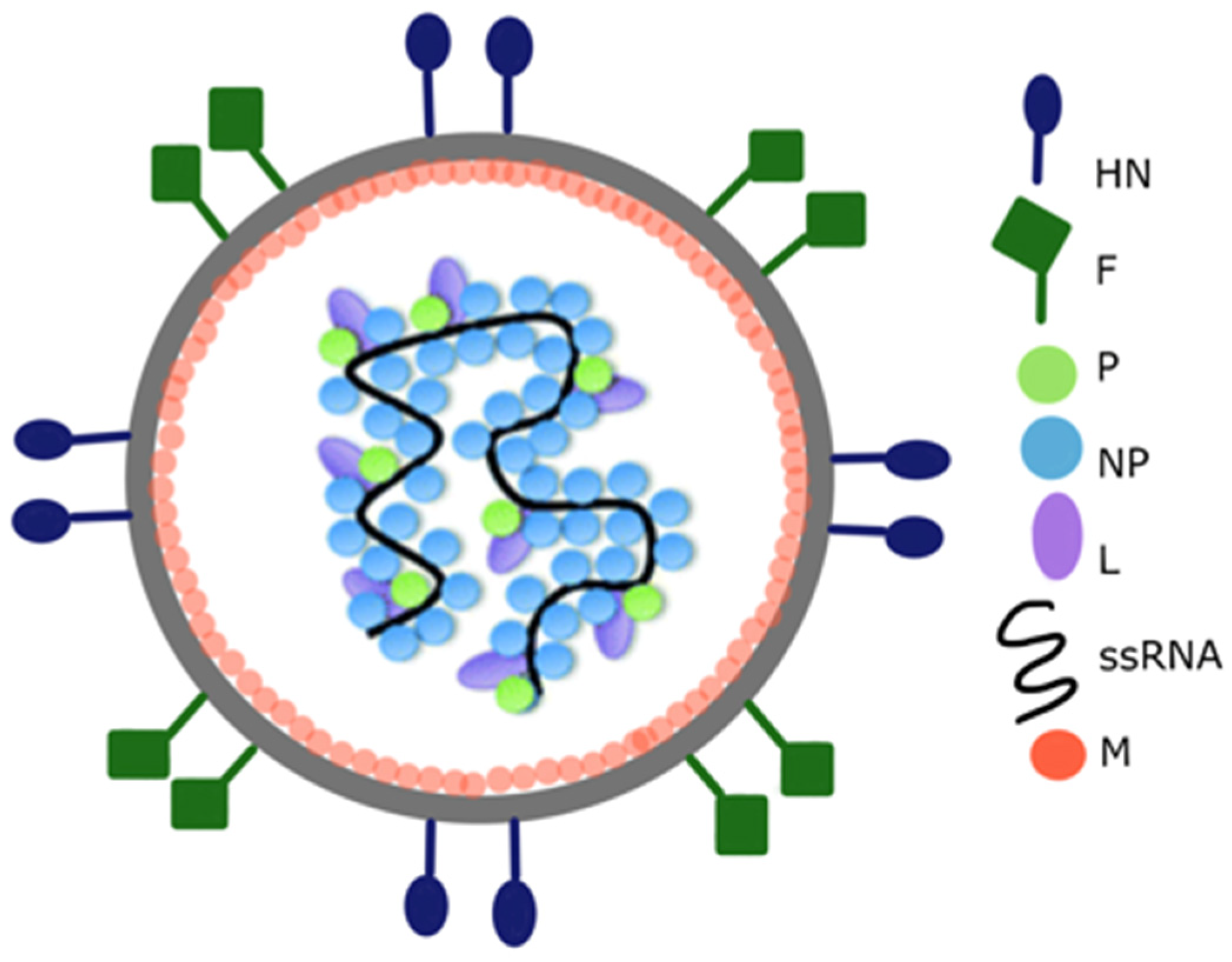
| Vector Name | Vector Backbone | Features and Modification(s) | References |
|---|---|---|---|
| Magnifection system developed by Icon Genetics, Germany (MagnICON) | Hybrid between TMV and TVCV | Consist of 3 modules:
| [50,53] |
| pEAQ-HT | CPMV |
| [41,52,54] |
| pHREAC | CPMV |
| [43] |
| TRBO (TMV-RNA-overexpression) | TMV |
| [55] |
| pBID4 | TMV |
| [56] |
| PVX vector | PVX |
| [57] |
| BeYDV | Geminivirus |
| [58] |
Publisher’s Note: MDPI stays neutral with regard to jurisdictional claims in published maps and institutional affiliations. |
© 2022 by the authors. Licensee MDPI, Basel, Switzerland. This article is an open access article distributed under the terms and conditions of the Creative Commons Attribution (CC BY) license (https://creativecommons.org/licenses/by/4.0/).
Share and Cite
Nurzijah, I.; Elbohy, O.A.; Kanyuka, K.; Daly, J.M.; Dunham, S. Development of Plant-Based Vaccines for Prevention of Avian Influenza and Newcastle Disease in Poultry. Vaccines 2022, 10, 478. https://doi.org/10.3390/vaccines10030478
Nurzijah I, Elbohy OA, Kanyuka K, Daly JM, Dunham S. Development of Plant-Based Vaccines for Prevention of Avian Influenza and Newcastle Disease in Poultry. Vaccines. 2022; 10(3):478. https://doi.org/10.3390/vaccines10030478
Chicago/Turabian StyleNurzijah, Ika, Ola A. Elbohy, Kostya Kanyuka, Janet M. Daly, and Stephen Dunham. 2022. "Development of Plant-Based Vaccines for Prevention of Avian Influenza and Newcastle Disease in Poultry" Vaccines 10, no. 3: 478. https://doi.org/10.3390/vaccines10030478
APA StyleNurzijah, I., Elbohy, O. A., Kanyuka, K., Daly, J. M., & Dunham, S. (2022). Development of Plant-Based Vaccines for Prevention of Avian Influenza and Newcastle Disease in Poultry. Vaccines, 10(3), 478. https://doi.org/10.3390/vaccines10030478









